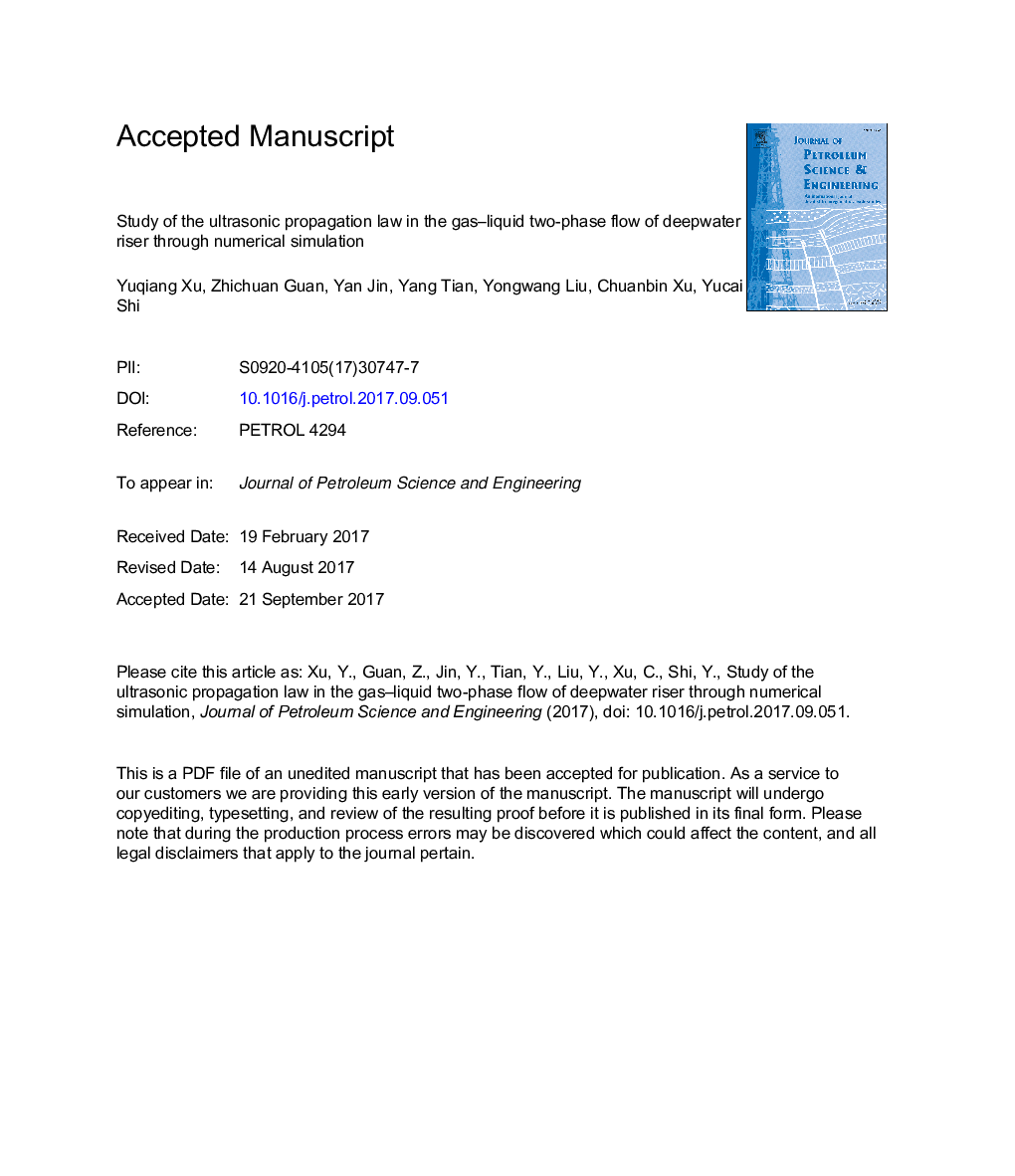| Article ID | Journal | Published Year | Pages | File Type |
|---|---|---|---|---|
| 5483872 | Journal of Petroleum Science and Engineering | 2017 | 22 Pages |
Abstract
In the drilling of deepwater wells, early detection of gas kicks is a crucial and difficult well-control task. A common and advantageous method is the underwater ultrasonic monitoring of the gas-liquid two-phase flow of deepwater risers. This study focuses on the problems of the early-stage ultrasonic monitoring of gas kicks in deepwater risers, and combines theoretical analysis and experimental verification to establish a method for finite element numerical simulation of ultrasonic wave propagation in the gas-liquid two-phase flow of a deepwater riser annulus. The acoustic-solid coupling module of COMSOL Multiphysics software was adopted. Through pattern analysis of ultrasonic wave propagation under different conditions, the sensitivity analysis was carried out by combining time domain and frequency domain analysis. Through analysis, two characteristic parameters of ultrasonic signals sensitive to the gas-liquid ratio, namely, the amplitude standard deviation (S) and frequency domain mean (μ) were selected. Their degrees of sensitivity to gas bubble size and density were analyzed to determine the optimal installation location of an ultrasonic receiver probe. And the optimal installation locations were located at 66°-88° and â66°ââ88° of the arc area. Finally, a quantitative relationship between the ultrasonic signal characteristic parameters (S and μ) and the void fractions of risers (β) was established by using two-factor regression analysis. It was proved that its relative error was 4.5%, which was less than the acceptable error threshold of 5%, thus meeting the engineering requirements.
Related Topics
Physical Sciences and Engineering
Earth and Planetary Sciences
Economic Geology
Authors
Yuqiang Xu, Zhichuan Guan, Yan Jin, Yang Tian, Yongwang Liu, Chuanbin Xu, Yucai Shi,
